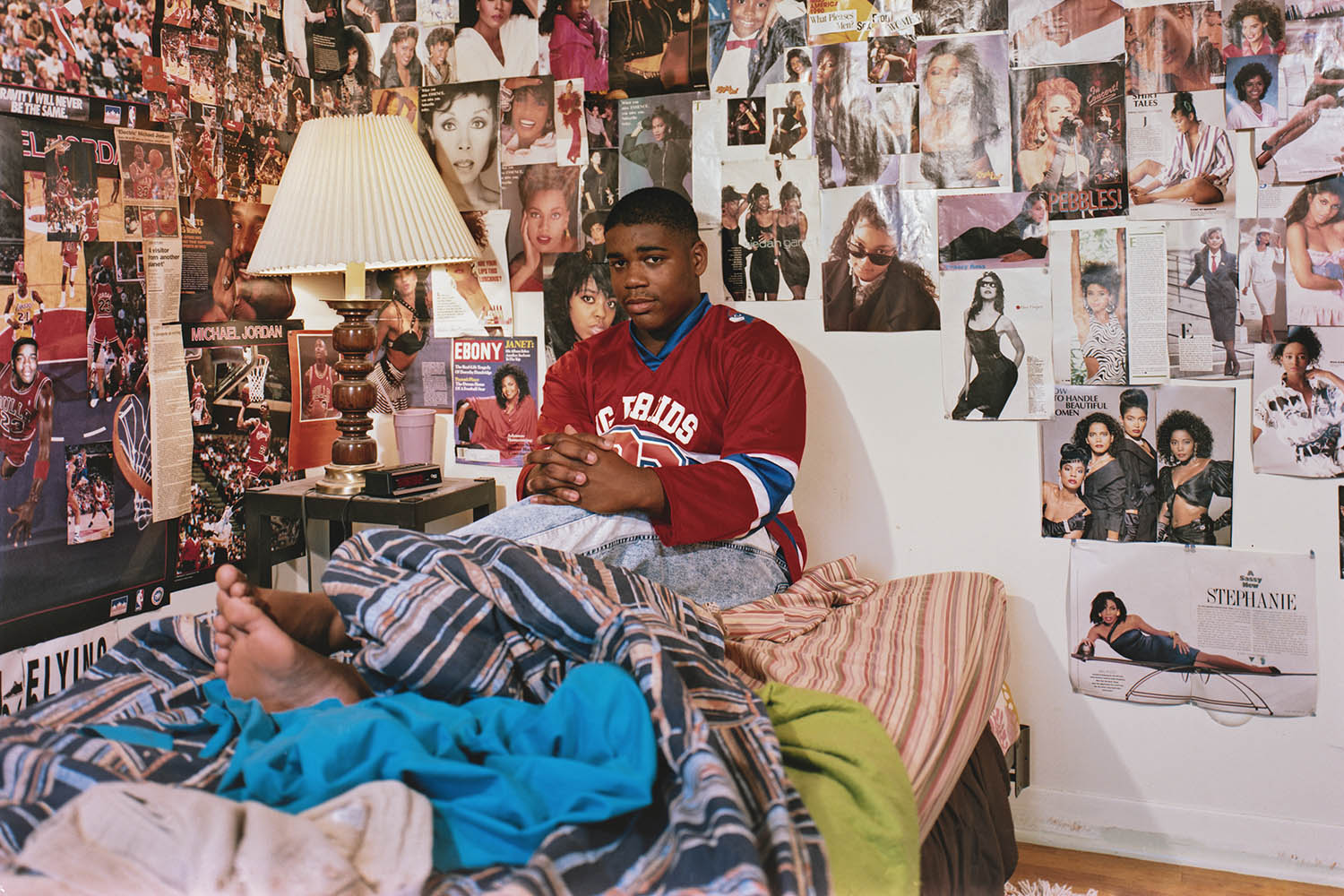This, as Adrienne Salinger points out, is a photograph made up of photographs. We’re in the inner sanctum of Fred H, a 17-year-old from Syracuse, New York, whom Salinger met in 1990 while working on her classic series Teenagers in their Bedrooms. Posters and magazine cutouts blanket the walls and ceiling – male sports players on one side, female entertainment stars on the other. Below them sits Fred, fixing the camera with an amused, mildly confrontational gaze as if daring the viewer to judge him on his decor.
From today’s vantage, it seems extraordinary that Salinger made this happen. “I would meet teenagers in public spaces and say: ‘Can I come home with you and photograph you in your bedroom?’” she recalls of the project that she began in the mid-80s and published as a book in 1995 (it’s now being reissued for its 30th anniversary). Nearly 200 US teenagers accepted her proposition and the rules that went with it. She asked them not to clean their rooms or prepare in any way. No parents were allowed in, though Salinger recalls Fred H’s mother “walking by the room and just rolling her eyes, which I thought was really funny. He was great, a real showman.”
One of Salinger’s main motivations was to “complicate the way we reduce teenagers and act as if they aren’t smart”. At first, some viewers may sniff at the pop-culture profusion on Fred’s walls. But there’s something deeper going on. In the text accompanying his portrait in the book, Fred reflects on growing up black in predominantly white neighbourhoods and enduring racism. Once, he and his brother were kept indoors all summer for fear of police harassment. It’s no surprise that all the figures gracing the walls of his bedroom are people of colour asserting their power in one way or another – examples of black excellence for Fred to aspire to when he packs up his bags and leaves home.
Teenagers in their Bedrooms by Adrienne Salinger is published by DAP on 25 September
Photograph courtesy of the artist and DAP

